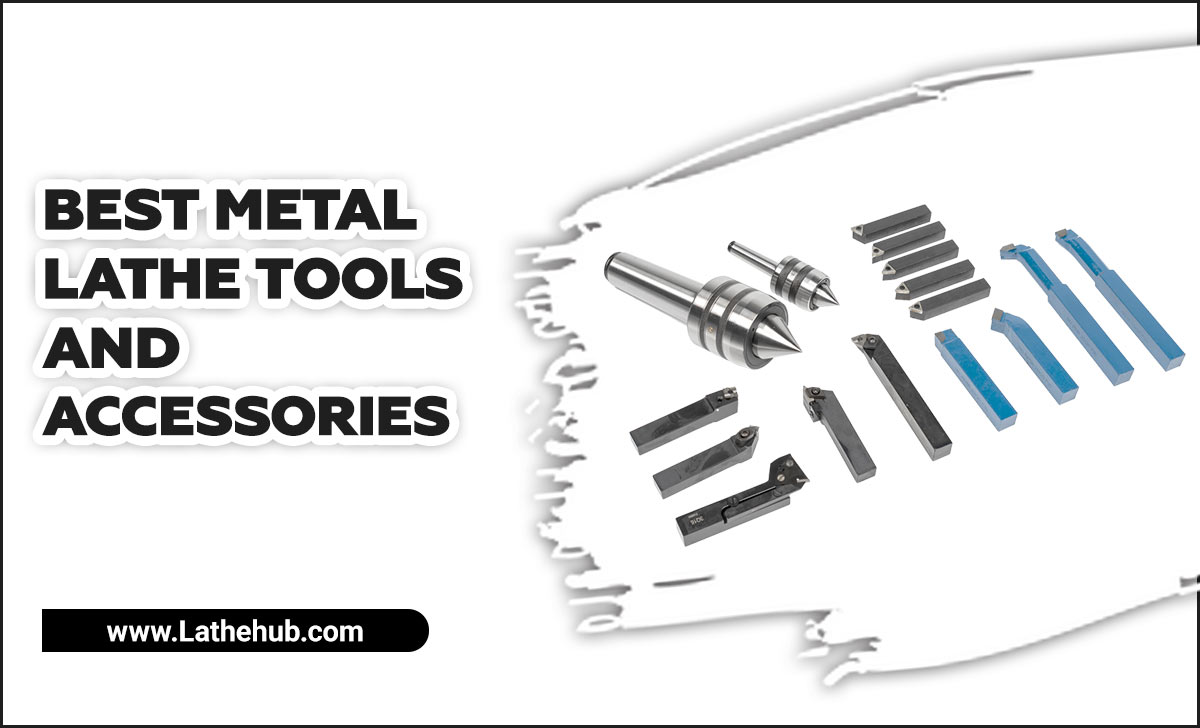Getting the right feeds and speeds for your 1/8 inch thread mill is crucial for clean threads and happy tools. This guide breaks down the essential speeds and feeds, making it simple for beginners to achieve precision every time. We’ll cover everything you need to know to confidently tackle those small threads.
Welcome to Lathe Hub! I’m Daniel Bates, and I’ve spent a lifetime in the workshop, tinkering with metal lathes, milling machines, and wood lathes. My passion is taking those sometimes-intimidating tools and making them accessible for everyone, especially beginners. If you’ve ever found yourself staring at a thread mill, wondering what on earth to set your machine to, you’re in the right place. Those tiny 1/8 inch threads can be tricky, but understanding the right feeds and speeds is like having a magic wand for your milling projects. It’s not as complicated as it sounds, and with a few key principles, you’ll be creating perfect threads in no time, without stressing your tools or your material. Ready to conquer those miniature threads? Let’s dive in!
Understanding the Basics: Why Feeds and Speeds Matter for Small Threads
Feeds and speeds are the heart of precision machining. For a 1/8 inch thread mill, getting these settings right is even more critical because of the small tool size and the delicate nature of the operation. Too fast, and you risk breaking the tiny mill or burning up your material. Too slow, and you’ll get a poor surface finish, chatter, or inadequate thread engagement.
Think of it like this: the cutting speed tells your tool how fast to rotate (RPM – revolutions per minute), and the feed rate tells your machine how fast to move that spinning tool into the material. For a 1/8 inch thread mill, these values need to be carefully balanced. The goal is to have the tool engage the material efficiently, removing a small, manageable chip with each pass. This not only ensures a quality thread but also extends the life of your valuable tooling.
Key Factors Influencing Feeds and Speeds
Several elements play a role in determining the ideal settings for your 1/8 inch thread mill. Understanding these will help you adapt the general guidelines to your specific situation:
- Material Type: This is perhaps the biggest factor. Softer materials like aluminum and plastics require much faster speeds and slower feed rates than hard materials like stainless steel or Inconel 718. The hardness and toughness of the material dictate how much heat is generated and how much force is required to cut.
- Thread Mill Coating: Many thread mills come with special coatings (like TiN, TiAlN, or ZrN) that improve their performance by increasing hardness, reducing friction, and offering better heat resistance. Coated tools can often run at higher speeds.
- Number of Flutes on the Thread Mill: Thread mills typically come with 2, 3, or 4 flutes. More flutes generally mean you can achieve a higher material removal rate, but each flute is removing less material per revolution. For smaller tools, 2 or 3 flutes are common.
- Thread Depth: Deeper threads require more passes and can generate more heat. You might need to adjust your feed rate per pass or take multiple finishing passes.
- Coolant/Lubrication: Using a suitable coolant or cutting fluid is essential. It helps to cool the cutting zone, lubricate the tool, and flush away chips. This allows for higher cutting speeds and improves tool life and surface finish.
- Machine Rigidity: A more rigid machine can handle faster feeds and higher cutting forces without chatter. Less rigid machines may require slower feeds and lighter cuts to maintain accuracy and surface finish.
- Thread Specifications: The pitch and diameter of the thread are fundamental. A 1/8 inch thread can have different pitches (e.g., 1/8-27 NPT vs. 1/8-28 BSP vs. 1/8-40). The thread form (NPT, UNC, UNF, etc.) also influences the cutting action.
Calculating Your Thread Mill Speeds and Feeds
The process involves two main calculations: cutting speed and feed rate. Machining handbooks and manufacturer data sheets are invaluable resources. However, we can simplify this with common formulas and readily available online calculators.
Cutting Speed (SFM/SMM)
Cutting speed is the surface speed of the tool’s cutting edge. It’s usually expressed in surface feet per minute (SFM) for Imperial units or surface meters per minute (SMM) for metric units. Different materials have recommended cutting speed ranges. The formula to calculate spindle speed (RPM) is:
Imperial: RPM = (SFM × 3.82) / D
Metric: RPM = (SMM × 1000) / (π × D)
Where:
- RPM = Spindle Revolutions Per Minute
- SFM = Recommended Surface Feet Per Minute for the material
- SMM = Recommended Surface Meters Per Minute for the material
- D = Diameter of the thread mill in inches (for Imperial) or millimeters (for Metric)
- 3.82 is a conversion factor for inches to feet and π.
- π (pi) ≈ 3.14159
- 1000 is a conversion factor for meters to millimeters.
Feed Rate (IPM/MM/min)
The feed rate is how fast the tool moves through the workpiece. For thread milling, it’s critical to consider the chip load per tooth. The feed rate is calculated based on the desired chip load, the number of flutes, and the spindle speed.
Imperial: Feed Rate (IPM) = Chip Load per Tooth × Number of Flutes × RPM
Metric: Feed Rate (mm/min) = Chip Load per Tooth × Number of Flutes × RPM
Chip Load per Tooth is a crucial value provided by the tool manufacturer or found in machining data. It’s the thickness of the chip removed by each cutting edge of the tool. For a 1/8 inch thread mill, this value will be very small.
I/8 Inch Thread Mill Speeds and Feeds for Common Materials
Finding the exact parameters can sometimes feel like guesswork, but by using recommended ranges for common materials and adjusting based on your specific setup, you can achieve great results. Below are some general guidelines for a 1/8 inch thread mill. Always start conservatively and adjust upwards if the cutting appears clean and the tool is holding up well.
For the purposes of these tables, we’ll assume a standard 1/8″ thread diameter and consider common pitches like 27 TPI (for NPT) or 40 TPI (for fine threads). We will also assume a thread mill with 2 flutes, as this is common for small thread mills. For specific requirements like “1/8 inch thread mill feeds and speeds for Inconel 718,” you’ll need to consult specialized charts or the manufacturer’s data due to its extreme hardness.
Table 1: General Guidelines for Aluminum (6061)
Aluminum is a softer, more forgiving material. You can typically use higher cutting speeds.
| Parameter | Value | Notes |
|---|---|---|
| Material | Aluminum (e.g., 6061) | Commonly used in DIY and general machining. |
| Thread Mill Diameter | 1/8 inch | Standard size. |
| Number of Flutes | 2 | Typical for small thread mills. |
| Recommended Surface Speed (SFM) | 250 – 400 SFM | Start on the lower end. |
| Calculated RPM (approx. for D=0.125″) | ~7640 – 12224 RPM | Use the formula: RPM = (SFM 3.82) / 0.125 |
| Recommended Chip Load per Tooth | 0.0005 – 0.001 inch | This is critical. Check tool manufacturer. |
| Calculated Feed Rate (IPM) | ~1.9 – 4.9 IPM | Use the formula: Feed Rate = Chip Load Flutes RPM (e.g., for 250 SFM and 0.0007″ chip load: 0.0007 2 7640 = ~10.7 IPM. Adjust based on actual RPM and chip load) |
| Coolant/Lubrication | Yes | Flood coolant or mist is recommended. |
Table 2: General Guidelines for Mild Steel (1018)
Mild steel is tougher than aluminum and requires slower cutting speeds and potentially a slightly higher chip load. Use of coolant is highly recommended.
| Parameter | Value | Notes |
|---|---|---|
| Material | Mild Steel (e.g., 1018) | Common in structural parts. |
| Thread Mill Diameter | 1/8 inch | Standard size. |
| Number of Flutes | 2 | Typical for small thread mills. |
| Recommended Surface Speed (SFM) | 120 – 200 SFM | Start on the lower end. |
| Calculated RPM (approx. for D=0.125″) | ~3667 – 6112 RPM | Use the formula: RPM = (SFM 3.82) / 0.125 |
| Recommended Chip Load per Tooth | 0.0004 – 0.0007 inch | This is critical. Check tool manufacturer. |
| Calculated Feed Rate (IPM) | ~1.0 – 2.6 IPM | Use the formula: Feed Rate = Chip Load Flutes RPM (e.g., for 120 SFM and 0.0005″ chip load: 0.0005 2 3667 = ~3.7 IPM. Make adjustments.) |
| Coolant/Lubrication | Highly Recommended | Flood or mist coolant is essential for heat removal and chip evacuation. |
Table 3: General Guidelines for Stainless Steel (303/304)
Stainless steel is significantly harder and gummier than mild steel, necessitating slower speeds, careful chip control, and excellent lubrication. You often need to maintain a slightly higher chip load to prevent work hardening.
| Parameter | Value | Notes |
|---|---|---|
| Material | Stainless Steel (e.g., 303/304) | Prone to work hardening if not machined correctly. |
| Thread Mill Diameter | 1/8 inch | Standard size. |
| Number of Flutes | 2 | Typical for small thread mills. |
| Recommended Surface Speed (SFM) | 70 – 120 SFM | Start on the lower end. |
| Calculated RPM (approx. for D=0.125″) | ~1773 – 3046 RPM | Use the formula: RPM = (SFM 3.82) / 0.125 |
| Recommended Chip Load per Tooth | 0.0003 – 0.0006 inch | Crucial for preventing work hardening. |
| Calculated Feed Rate (IPM) | ~0.4 – 1.5 IPM | Use the formula: Feed Rate = Chip Load Flutes RPM (e.g., for 70 SFM and 0.0004″ chip load: 0.0004 2 1773 = ~1.4 IPM. Adjust as needed.) |
| Coolant/Lubrication | Essential | High-pressure coolant and possibly a cutting paste can help. |
Special Considerations for Inconel 718
When you look for “1/8 inch thread mill feeds and speeds for Inconel 718,” you’re entering the realm of superalloys. Inconel 718 is exceptionally difficult to machine due to its high strength at elevated temperatures, tendency to work harden rapidly, and abrasive nature. Machining it requires a highly specialized approach, and general guidelines often fall short.
Here’s what you need to know about machining Inconel 718:
- Extremely Low Surface Speeds: For Inconel 718, SFM values can drop drastically, often in the range of 20-50 SFM, sometimes even lower depending on the specific tool and coating.
- Very Fine Chip Loads: To combat work hardening, extremely small chip loads per tooth are necessary, often in the 0.0002 to 0.0004 inch range, or even less with smaller diameter tools.
- Specialized Tooling: High-performance, specialized thread mills designed for exotic alloys are a must. These often feature extremely hard coatings (like PVD coatings such as TiAlN or AlTiN) and geometries optimized for difficult materials.
- Rigid Machine and Setup: A very rigid machine, a robust workholding setup, and minimal tool overhang are essential to prevent vibration and maintain accuracy.
- Aggressive Coolant/Lubrication: High-pressure, high-volume coolant delivery is critical for cooling, lubrication, and chip evacuation. Specialized cutting fluids designed for superalloys are often required.
- Manufacturer Data is King: For Inconel 718, always prioritize the data provided by the thread mill manufacturer. They engineer their tools for specific materials and will provide the most accurate starting points for feeds and speeds. For example, a tool manufacturer might recommend an SFM of 30 and a chip load of 0.0003″ for a 1/8″ thread mill in Inconel 718.
Let’s look at an estimated set of parameters, but remember these are highly specific and should be verified:
Table 4: Estimated Guidelines for Inconel 718
| Parameter | Value | Notes |
|---|---|---|
| Material | Inconel 718 | Superalloy requiring specialized machining. |
| Thread Mill Diameter | 1/8 inch | Standard size. |
| Number of Flutes | 2 | Typical for small thread mills. |
| Recommended Surface Speed (SFM) | 20 – 40 SFM | Must consult tool manufacturer. |
| Calculated RPM (approx. for D=0.125″) | ~480 – 960 RPM | Use the formula: RPM = (SFM 3.82) / 0.125 |
| Recommended Chip Load per Tooth | 0.0002 – 0.0004 inch | Extremely small chips to combat work hardening. Consult tool manufacturer. |
| Calculated Feed Rate (IPM) | ~0.2 – 0.8 IPM | Use the formula: Feed Rate = Chip Load Flutes RPM (e.g., for 20 SFM and 0.0002″ chip load: 0.0002 2 480 = ~0.2 IPM. This will be very slow.) |
| Coolant/Lubrication |








